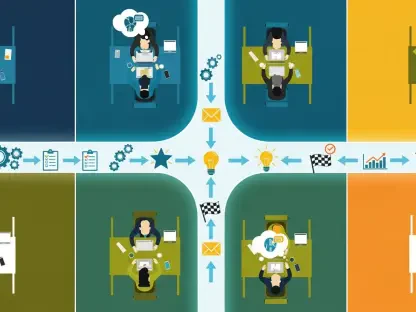In today’s competitive business environment, integrating technology into human resources (HR) processes is no longer optional; it’s a vital necessity for any organization aiming to stay ahead. A Human Resource Information System (HRIS) has emerged as a critical tool, enabling companies to streamline their operations, enhance employee engagement, and drive overall organizational success. This article explores the pivotal role that HRIS plays across various HR functions, from talent acquisition to the development and retention of employees.
Streamlining the Recruitment Process
Efficient recruitment forms the cornerstone of building a talented workforce, and an HRIS significantly simplifies this process. By integrating an Applicant Tracking System (ATS), an HRIS manages job postings, filters resumes, and facilitates candidate communications, making the recruitment process more effective and less time-consuming. With this automation, HR professionals can focus on more strategic elements of recruitment, ensuring the quality of new hires. The ATS function is not just about saving time but also about improving the overall quality of hires, thereby emphasizing the strategic importance of the HR function.
The analytics capabilities embedded within an HRIS provide invaluable data on recruitment trends, such as identifying the most effective recruitment channels and determining the average time taken to fill positions. Organizations can leverage this information to continually refine their recruitment strategies, ensuring they attract the best talent in their respective industries. Furthermore, HRIS systems enhance the collaboration among recruitment teams, as shared databases and real-time updates contribute to a more coordinated and transparent recruitment process. This ultimately leads to better hiring decisions, enhancing the overall talent pool of the organization.
Enhancing the Onboarding Experience
The onboarding experience is a critical phase that significantly impacts employee retention, and an HRIS offers a structured and seamless onboarding process. Making new hires feel welcomed and prepared for their roles can be achieved through digital onboarding checklists, automated document management, and integrated training modules. These features collectively contribute to a consistent and engaging onboarding experience, ensuring that new employees feel informed, prepared, and integrated into the company culture from day one. According to research, effective onboarding programs supported by an HRIS can increase employee retention rates by up to 82%.
Additionally, HRIS platforms often include interactive elements like welcome videos, quizzes, and e-learning modules, which not only provide essential information but also engage new employees in a more enjoyable and interactive way. These tools are crucial in making the learning process more interactive and engaging, thereby enhancing the onboarding experience further. When employees start their journey on a positive note, it sets the tone for their overall experience within the organization, significantly reducing turnover rates in the initial months of employment.
Bolstering Employee Engagement
Employee engagement is crucial for retaining top talent, and an HRIS plays a vital role in fostering this engagement through various tools designed for regular employee surveys, feedback collection, and recognition programs. These features enable organizations to continuously gauge employee satisfaction and proactively address issues. Real-time feedback mechanisms and recognition programs embedded within an HRIS can significantly boost morale and motivation, ensuring that employees feel valued and heard.
When employees see that their contributions are recognized and that their feedback is acted upon, their engagement levels naturally rise. Gamification elements, often integrated into HRIS platforms, make learning and development activities more interactive and enjoyable. Turning training into a game-like experience encourages employees to participate more enthusiastically, thereby fostering an environment of continuous learning and development. This high level of engagement leads to better performance, higher productivity, and, ultimately, increased retention rates, as employees are more likely to stay with an organization that values and invests in their growth.
Supporting Learning and Development
Investing in employee development is essential for both retention and overall organizational growth. An HRIS facilitates personalized training programs tailored to the specific needs and career aspirations of employees. These programs can include e-learning modules, webinars, face-to-face sessions, and formal certifications. Statistics indicate that 94% of employees would stay longer at a company if it invested in their career development, highlighting the importance of continuous learning opportunities.
By leveraging the functionalities of an HRIS, organizations can demonstrate their commitment to employee growth, thereby significantly enhancing retention rates. The centralized nature of an HRIS makes managing and tracking learning and development activities straightforward. Managers can monitor employee progress, identify skill gaps, and customize training plans accordingly. This ensures continuous professional growth for employees and enables the organization to have a highly skilled and capable workforce.
Facilitation of Succession Planning
Succession planning is critical for the long-term success and sustainability of any organization. An HRIS assists in identifying high-potential employees and capturing the essential skills and competencies required for key roles within the company. This structured approach ensures that future leaders are nurtured and developed systematically. With an HRIS, companies can develop comprehensive succession plans, creating clear pathways for career advancement. This not only secures organizational stability but also boosts employee loyalty by offering transparency in career progression opportunities.
By supporting internal mobility, an HRIS fosters a culture where employees see potential for growth within the company, reducing turnover rates and building a more resilient workforce. Employees are more likely to stay with an organization that invests in their future and provides clear advancement opportunities. The visibility and transparency offered by an HRIS in succession planning help in building trust and loyalty among employees, thereby contributing to a stable and motivated workforce.
Data-Driven Decision Making
In today’s competitive business landscape, the integration of technology into human resource (HR) processes has transformed from an optional enhancement to an essential strategy for organizations striving to remain competitive. A Human Resource Information System (HRIS) has become an indispensable tool, allowing businesses to streamline operations, boost employee engagement, and achieve organizational success. HRIS plays a crucial role in multiple HR functions, from attracting and hiring top talent to developing and retaining employees.
By leveraging HRIS, companies can automate routine tasks, reduce administrative overhead, and gain strategic insights through data analytics. These systems enable HR professionals to focus on more strategic initiatives like workforce planning, employee development programs, and performance management. Furthermore, HRIS enhances employee experience by providing self-service portals for managing personal information, benefits, and career progression.
In summary, the adoption of a robust HRIS is indispensable for any business aiming to optimize HR functions and sustain long-term growth.









